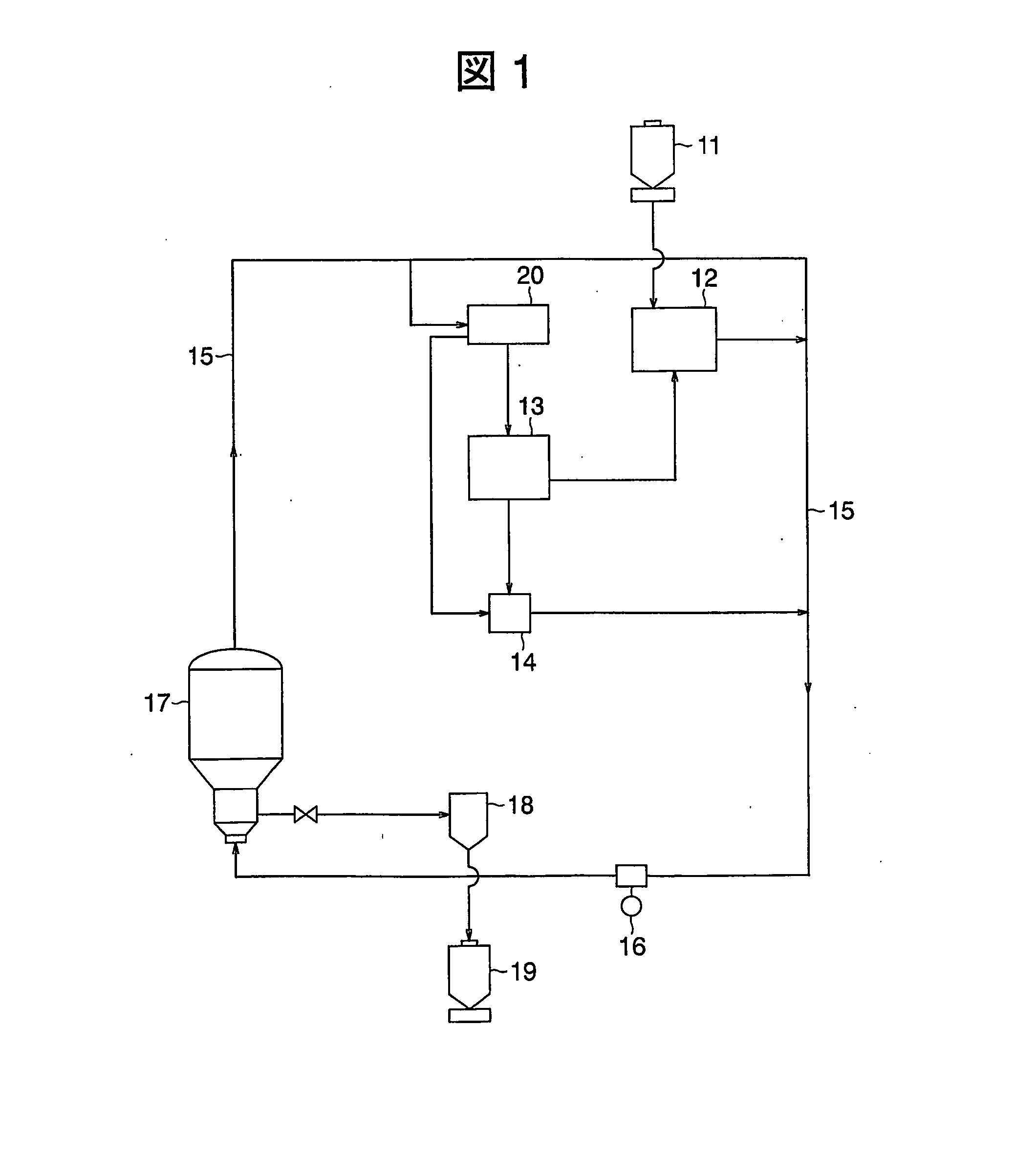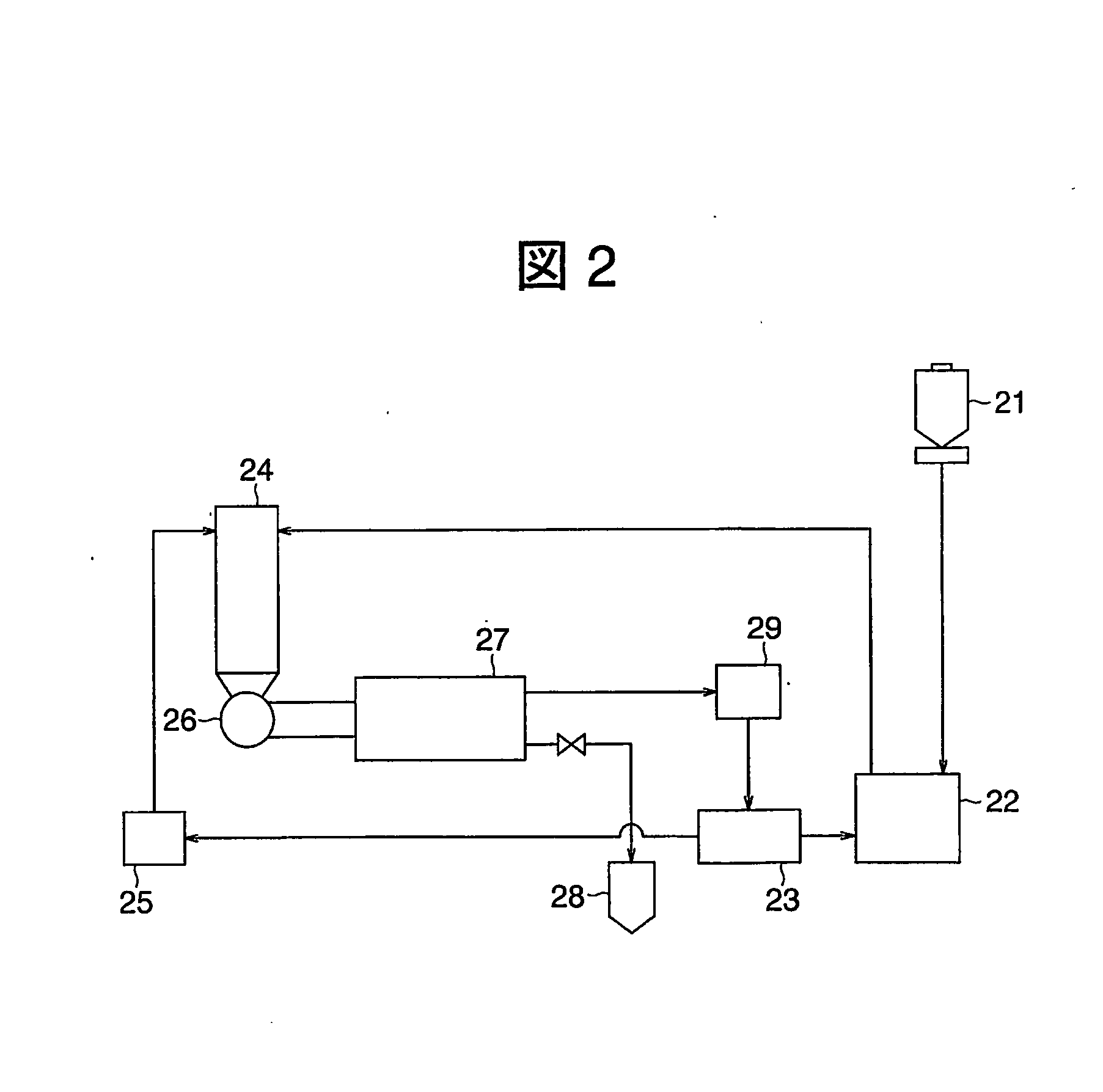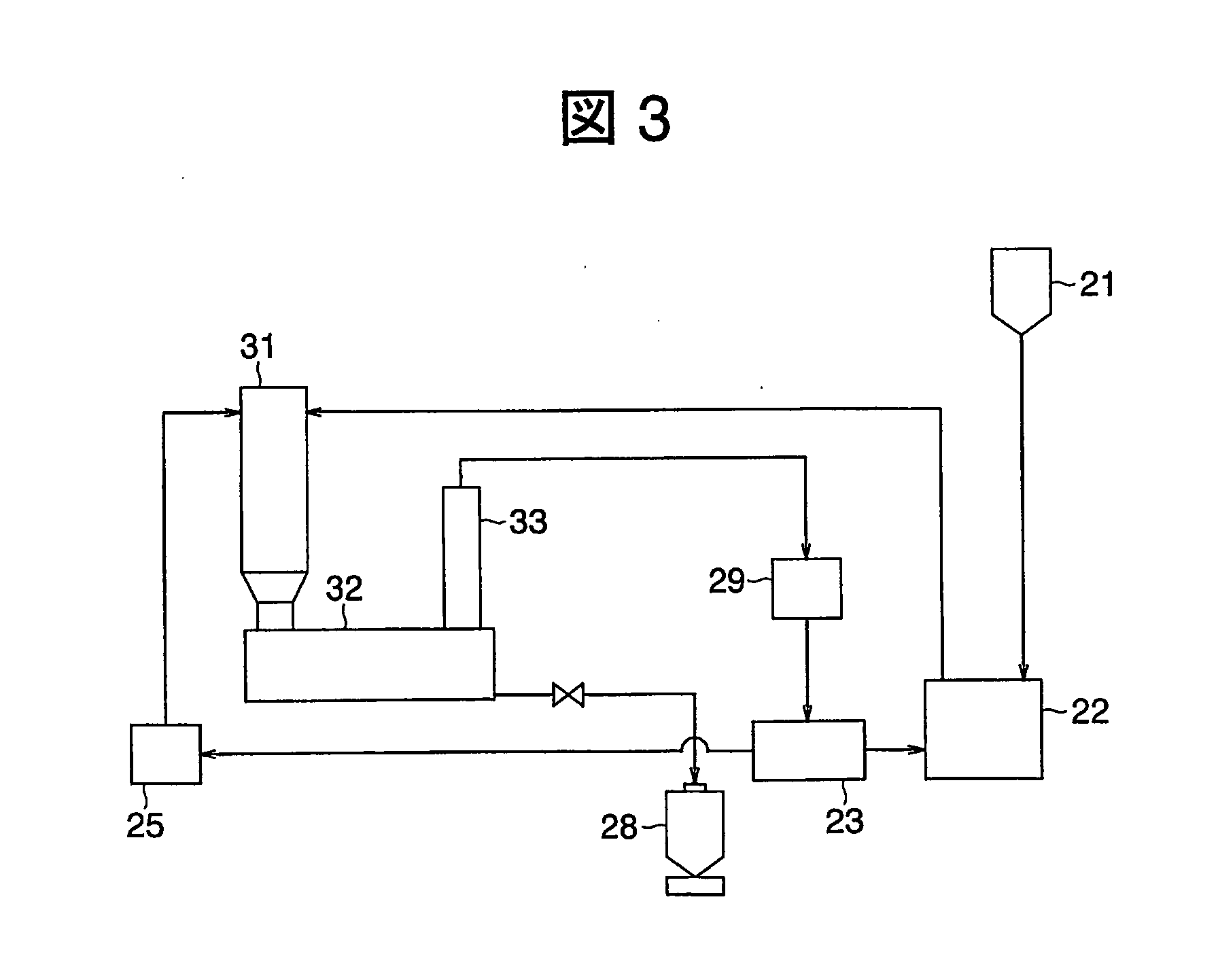Process for producing high-purity silicon and apparatus
a production process and high-purity silicon technology, applied in the direction of crystal growth process, polycrystalline material growth, silicon compounds, etc., can solve the problems of high cost, troublesome disposal, and remained supply of sufficient amount of silicon, and achieve the effect of improving reaction efficiency and better crystalline qualities
- Summary
- Abstract
- Description
- Claims
- Application Information
AI Technical Summary
Benefits of technology
Problems solved by technology
Method used
Image
Examples
example 1
[0165] Silicon producing facilities were constructed with the reaction furnace of FIG. 6 and producing process was constructed as shown in FIG. 7.
[0166] Zinc chloride as circulating gas is adjusted to be its temperature of 1100° C. and the pressure of 2 kg / cm2, and it is sent to reaction furnace part, and at the same time, the mixed gas of silicon tetra-chloride and zinc chloride with 1:10 of ratio and mixed gas of zinc and zinc chloride with 1:2 of ratio were supplied to reaction furnace portion. The supply of zinc was made to be 3% more of the required theoretical amount of reaction with silicon tetra-chloride.
[0167] After one hour of reaction, zinc chloride gas was substituted with argon gas and tantalum portion in the reaction furnace was heated up to 1450° C. The inner part of the furnace was kept at 1100° C. to 1400° C. The temperature of the storing part (reservoir) is adjusted to be the same as that of reaction furnace. By doing this, silicon deposited on the surface of ta...
example 2
[0168] Using the same facilites as Example 1 except the tantalum portion being changed to molybdenum, Silicon production test was carried out. As no molybdenum mesh was available, same shaped perforated plate with 45% opening was used instead of cylindrical birdcage shaped mesh. By using this, the reaction was carried out at atmospheric gas zinc chloride pressure being 1 atm and the furnace temperature was 1050° C. The supply of zinc was done to be 3% more than the theoretical value. After the reaction, and after the argon gas substitution was over, electric power was given to molybdenum and silicon attached on its surface is moved to the storing portion (reservoir) as the melt then solidified. Analysis was performed to this and resulted to have more than 7-nine and complete no molybdenum was detected, so it is found that higher purity silicon could easily obtained.
example 3
[0169] Total process here is being similar to Example 1 with reaction furnace having its structure shown as FIG. 8 was applied in this example.
[0170] Zinc chloride gas flow heated at 1200° C. was used as an atmospheric gas and the furnace temperature was kept approximately at 1200° C. Silicon tetra-chloride and zinc gas were supplied to this by similar to Example 1. The zinc chloride gas of atmospheric gas was flown to circulate in the tantalum cylinder along the wall and zinc and silicon tetra-chloride gasses were made to react along with this gas flow. The reaction was ceased after 15 min and de-gas was carried out, then switched on the power source of the induction heating system and raised temperature of porous tantalum plate and web to be 1500° C. By doing this, silicon on tantalum surface was melted then sent down to the storage portion. Thus the silicon obtained with block shaped having its purity being 8-nine. By carrying out of CZ process to this silicon obtained silicon a...
PUM
| Property | Measurement | Unit |
|---|---|---|
| temperature | aaaaa | aaaaa |
| pressure | aaaaa | aaaaa |
| temperature | aaaaa | aaaaa |
Abstract
Description
Claims
Application Information
 Login to View More
Login to View More - R&D
- Intellectual Property
- Life Sciences
- Materials
- Tech Scout
- Unparalleled Data Quality
- Higher Quality Content
- 60% Fewer Hallucinations
Browse by: Latest US Patents, China's latest patents, Technical Efficacy Thesaurus, Application Domain, Technology Topic, Popular Technical Reports.
© 2025 PatSnap. All rights reserved.Legal|Privacy policy|Modern Slavery Act Transparency Statement|Sitemap|About US| Contact US: help@patsnap.com



